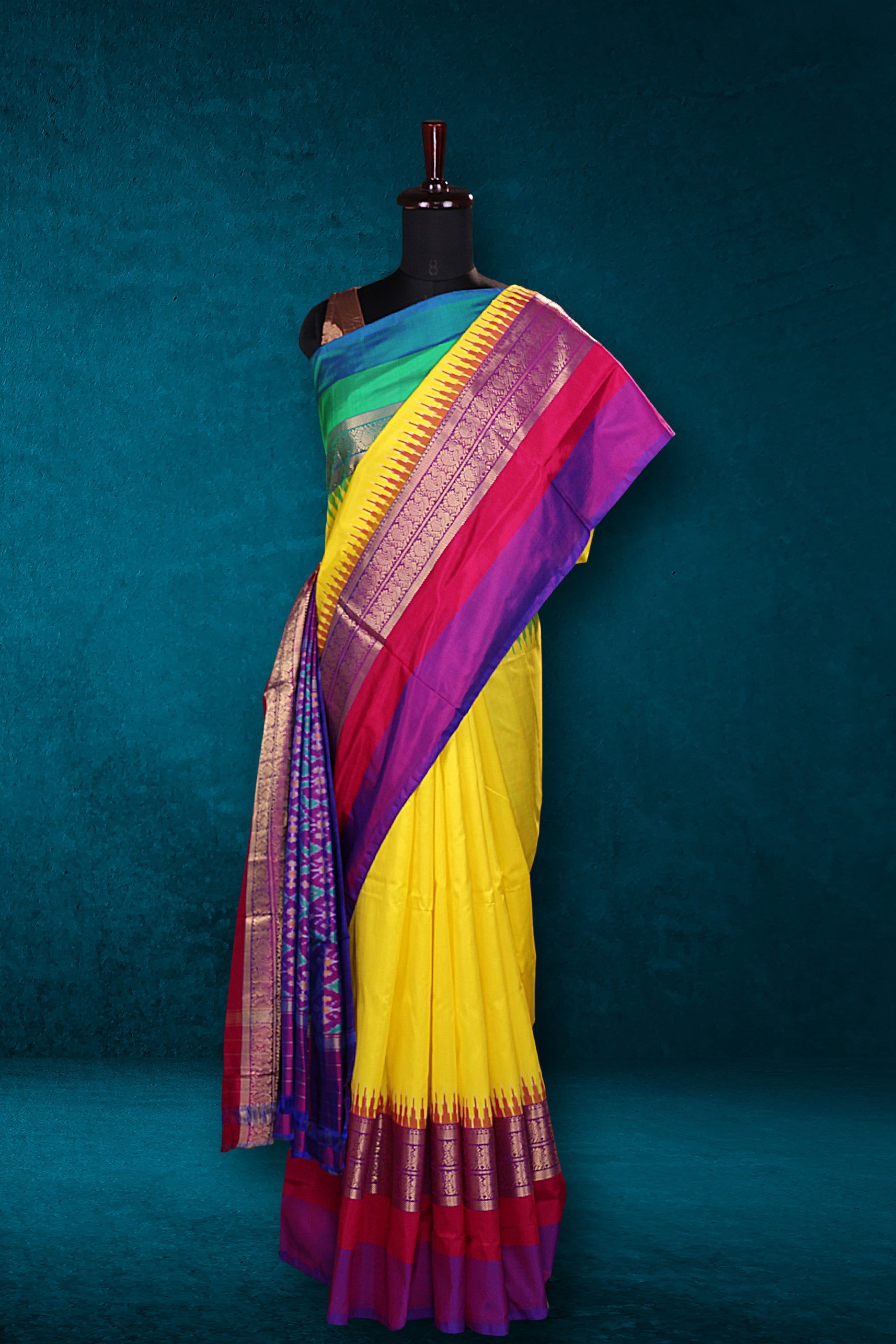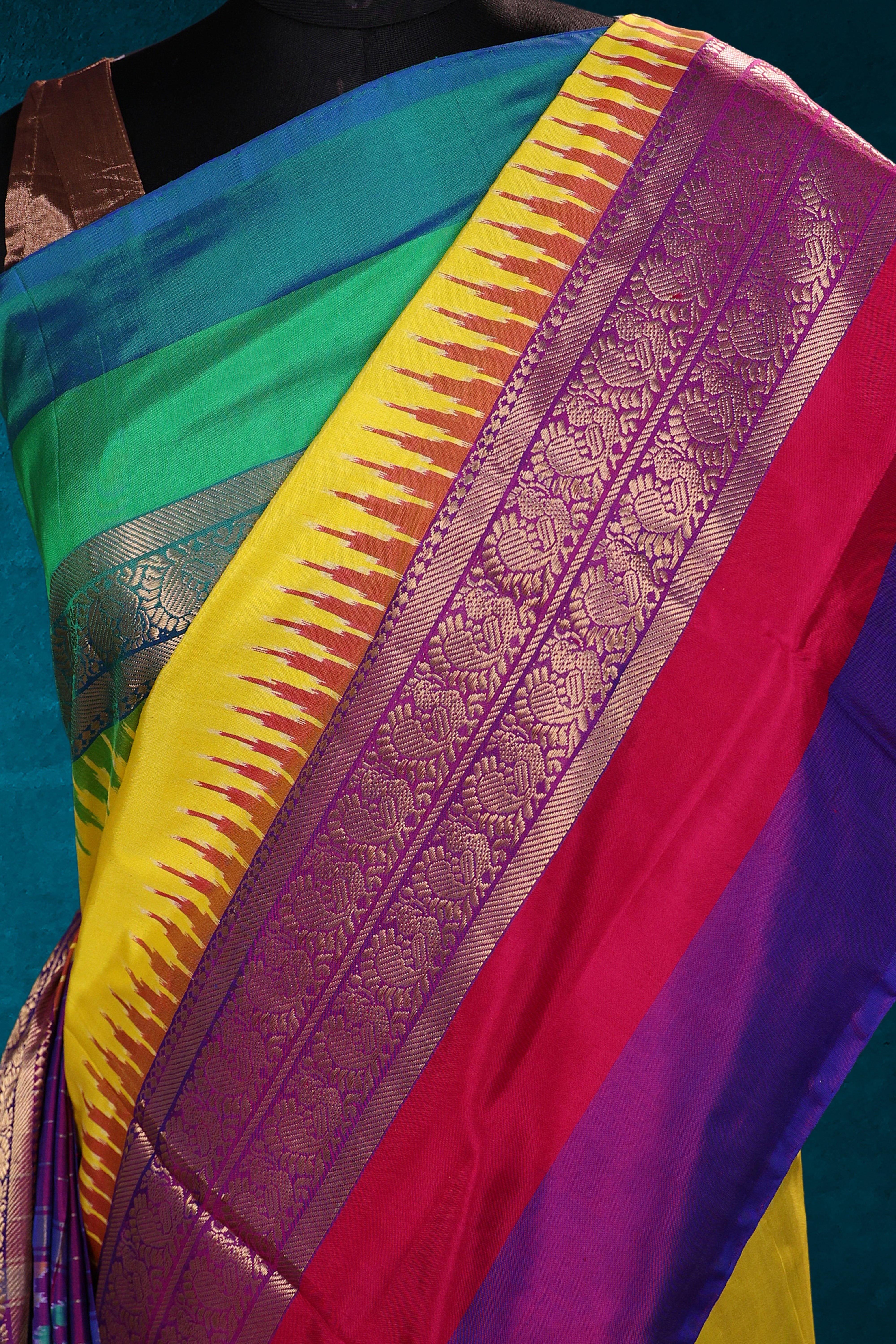A Pochampally saree is a traditional handwoven saree from the town of Pochampally in the Nalgonda district of Telangana, India. Known for its intricate designs and high-quality craftsmanship, the Pochampally saree is famous for its Ikat weaving technique. Here are some key features of these sarees:
Key Characteristics:
-
Ikat Weaving Technique: The defining feature of Pochampally sarees is their use of the Ikat technique, where the yarn is tie-dyed before weaving. This results in intricate, geometric patterns that are often diamond-shaped or floral, and the dyeing process creates vibrant, multicolored designs.
-
Fabric: Pochampally sarees are made from various materials, including silk, cotton, and cotton-silk blends. The silk variety is often used for formal occasions, while the cotton variety is lighter and suitable for daily wear.
-
Designs and Motifs: Common motifs include geometric patterns, floral motifs, zigzag patterns, and traditional motifs inspired by nature. These sarees can be plain or have borders with detailed designs.
-
Colors: These sarees are known for their rich color palettes, often featuring bold colors like red, green, yellow, and blue. The dyeing process allows for the creation of multi-colored patterns, which gives the saree a vibrant look.
-
Border: Pochampally sarees typically feature a contrasting border, which is also often woven using the Ikat technique. These borders are often broader and may include metallic or thread work.
-
Cultural Significance: Pochampally sarees are popular for special occasions such as weddings, festivals, and formal events. They are a symbol of the rich cultural heritage of Telangana and are appreciated both domestically and internationally.
How They Are Made:
- The process of making a Pochampally saree is labor-intensive, requiring skilled weavers who meticulously tie-dye the threads before weaving them on traditional handlooms. This makes each saree unique, with slight variations in patterns and colors.
The Pochampally saree was granted Geographical Indication (GI) status in 2004, recognizing its unique cultural and regional significance.
These sarees continue to be a popular choice for those seeking elegance, tradition, and a touch of craftsmanship in their attire.













